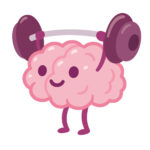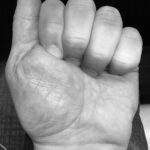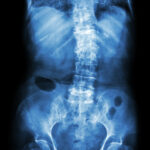The Default Mode Network (DMN) and your Chiropractor in Portland, Maine
Depression, Anxiety and Your Chiropractor The Default Mode Network Understanding The default mode network may help you take the action you need to improve your mental health during stressful times. The first step is understanding. Step two is taking action. New developments in neuroscience and understanding the brain have led to the research being published in neuroscience publications world wide. This information may the gateway to you taking better care of stress, anxiety and depression in your life. While more research will certainly be done, that which has been done so far, shows serious promise! The default mode network (DMN) is a group of brain regions that work together when you’re not actively focused on the outside world. It’s like the brain’s “default” setting, which kicks in when you’re daydreaming, thinking about yourself, or recalling memories. When you start doing something that requires attention, like solving a puzzle or working, the DMN tends to deactivate, allowing other brain networks to take over. It helps regulate emotions and maintain mental health by allowing you to reflect on your experiences and emotions. Disruptions in the DMN have been linked to various neurological and psychiatric disorders, such as Alzheimer’s disease, depression, and...
read moreThe Cost Of Chiropractic Care in Maine – 2025
The comparative cost of chiropractic care is important to understand. As the U.S. economy worsens and becomes less certain before it gets better, people are rightfully aware of how they are, or how they need to spend their money. Staying healthy and able to work in the shadow of statistics reporting clearly that back pain is the leading cause of disability in the U.S., may include outside help from a doctor. The information below is designed to help you understand what the research says. Our office is and always has been dedicated to making care affordable. The U.S. healthcare system is broken in the sense that the cost is inconceivably expensive. We are being forced to seek alternatives to traditional medical care for non-emergency help. We will continue to charge as little as possible so that everyone can afford our care and feel like they are being very well cared for without breaking the bank. Great affordable care that cuts no corners, with 24/7 access to me, and all because morally, it’s the right thing to do. Because we care about people before all else. ~Dr. Lou Cost can be a big factor when we make decisions about our healthcare. Sometimes people will...
read moreScleroderma Treatments Are Advancing. Portland, Maine
What are the most promising treatments for Scleroderma? Scleroderma is an autoimmune disorder that affects the tone of the skin and other tissues. It can present as a tight, immobilizing glove like feeling in the hands. When this disease manifests in a musician, it can be a disabling, career ending disorder. Brian Setzer was recently diagnosed with an undisclosed autoimmune disease that is preventing him from playing guitar, that he reports as feeling as though he is wearing gloves on his hands. It seems reasonable to speculate that the disease is more specifically, “Scleroderma”. At first, even second glance, this wouldn’t leave too many feeling optimistic about his future of playing. As one of the rockabilly guitar heroes of the past many decades, this news has been very disappointing for many. I did a bit of research on the more recent developments in treatment for scleroderma and this is what I found. While #2 seems like it could be a bit more invasive, but given that scleroderma can be fatal, #2 addresses this and seems to be pretty effective! So, based on recent clinical trials and research, the most promising treatments for scleroderma that show significant success rates are:...
read moreHiatal hernia causes, treatments, and a lesser known possible corrective option! Portland, Maine.
Before you climb the gurney to get under the knife, try this Hail Mary! (#3) Hiatal hernias occur when part of the stomach pushes through the diaphragm into the chest cavity. While the exact cause is not always clear, several factors contribute to their development. Hiatal hernias are fairly common affecting roughly 9.9% of the population according to a 2015 American Journal of Gastroenterology published study. What are some of the most common causes of a Hiatal Hernia? – Age-related changes to the diaphragm – Injury to the area – Being born with a larger hiatal opening – Increased abdominal pressure from: – Lifting heavy objects – Pregnancy – Obesity – Chronic straining during bowel movements – Coughing or vomiting What are the top risk factors? – Age over 50 – Female gender – Obesity – Smoking – Pregnancy – Family history/genetics – Certain autoimmune diseases Treatments Non-surgical Treatments 1. Medications: – Antacids to weaken stomach acid – Proton pump inhibitors (PPIs) or H-2 receptor blockers to reduce acid production – Prokinetics to strengthen the esophageal sphincter What are the risks of medicines for reflux caused by a hiatal hernia? Increased risk of cardiovascular disease. Higher likelihood of chronic...
read moreBack pain, mental health, quality of life and relationships in Southern Maine.
Back Pain & Relationships Back pain can have severe implications on daily quality of life, affecting various aspects of a person’s physical, emotional, and social well-being. Physically, chronic back pain can significantly hinder everyday activities that were once simple tasks. Bending to tie shoelaces, reaching for items on high shelves, or even standing for extended periods can become challenging and uncomfortable[1]. This constant discomfort can lead to a decrease in physical activity, potentially causing deconditioning and further exacerbating the pain, creating a vicious cycle of reduced mobility and increased discomfort[4]. Emotionally, the persistent nature of back pain can take a substantial toll on mental health. The constant struggle with pain and the uncertainty of improvement can lead to feelings of frustration, anxiety, and sadness[1]. Over time, this emotional distress may develop into more serious mental health issues such as depression, further impacting overall quality of life[2]. The emotional burden of chronic back pain can also contribute to lowered self-esteem, as individuals may feel defined by their pain and limited in their abilities to engage in activities they once enjoyed[2]. Socially, back pain can lead to significant isolation and strain on relationships. Many individuals with chronic back pain find themselves...
read more




